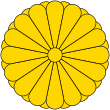This page is based on this
Wikipedia article Text is available under the
CC BY-SA 4.0 license; additional terms may apply.
Images, videos and audio are available under their respective licenses.

The National Diet is Japan's bicameral legislature. It is composed of a lower house called the House of Representatives, and an upper house, called the House of Councillors. Both houses of the Diet are directly elected under parallel voting systems. In addition to passing laws, the Diet is formally responsible for selecting the Prime Minister. The Diet was first convened as the Imperial Diet in 1889 as a result of adopting the Meiji Constitution. The Diet took its current form in 1947 upon the adoption of the post-war constitution, which considers it the highest organ of state power. The National Diet Building is in Nagatachō, Chiyoda, Tokyo.

The House of Representatives is the lower house of the National Diet of Japan. The House of Councillors is the upper house.

The House of Councillors is the upper house of the National Diet of Japan. The House of Representatives is the lower house. The House of Councillors is the successor to the pre-war House of Peers. If the two houses disagree on matters of the budget, treaties, or designation of the prime minister, the House of Representatives can insist on its decision. In other decisions, the House of Representatives can override a vote of the House of Councillors only by a two-thirds majority of members present.
The Japanese political process has three types of elections: general elections to the House of Representatives held every four years, elections to the House of Councillors held every three years to choose one-half of its members, and local elections held every four years for offices in prefectures, cities, and villages. Elections are supervised by election committees at each administrative level under the general direction of the Central Election Administration Committee, an attached organization to the Ministry of Internal Affairs and Communications (MIC). The minimum voting age in Japan's non-compulsory electoral system was reduced from twenty to eighteen years in June 2016. Voters must satisfy a three-month residency requirement before being allowed to cast a ballot.

The People's New Party was a Japanese political party formed on August 17, 2005 in the aftermath of the defeat of Prime Minister Junichiro Koizumi's Japan Post privatisation bills which led to a snap election. On March 21, 2013 party leader Shozaburo Jimi announced that he was disbanding the party.

Elections for the Japanese House of Councillors were held in Japan on 23 July 1989.
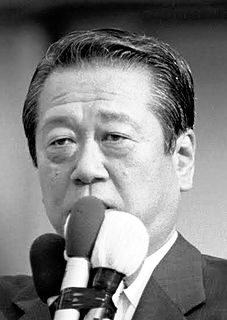
The 21st Elections to the House of Councillors for the upper house of the legislature of Japan were held on July 29, 2007. The date was originally to be July 22, but the ruling Liberal Democratic Party (LDP) decided in mid-June to extend the session of the House for a week to finish up legislative business; this step was criticised due to the short-term delay.
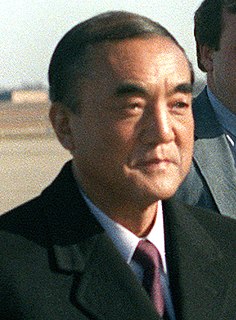
Elections for the Japanese House of Councillors were held in Japan on 26 June 1983. The House of Councillors elections were won by the ruling Liberal Democratic Party.

Elections for the Japanese House of Councillors were held in Japan in 1980. On 16 May 1980, the Japan Socialist Party (JSP) brought no-confidence motion before the Diet relating to corruption issues, proposing more defense spending and rises in public utility charges as reasons for the House of Representatives to withdraw its backing from the government. Unexpectedly, 69 Liberal Democratic Party (LDP) members of the Diet from the Fukuda Takeo, Miki Takeo and Hidenao Nakagawa factions abstained from voting on the motion. The government was defeated by 56 votes in total of 243 and resigned. For the first time elections for both the House of Councillors and the House of Representatives were called in June 1980. In the elections of both the houses the LDP gained a perfect majority.

Elections for the Japanese House of Councillors were held in Japan on July 12, 1998.
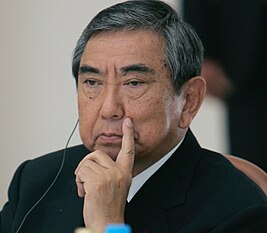
Elections for the Japanese House of Councillors were held in Japan in 1995.

Elections for the Japanese House of Councillors were held in Japan in 1986.
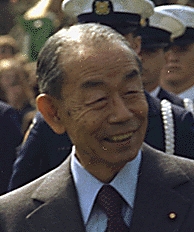
Elections for the Japanese House of Councillors were held in Japan in 1977.

The 23rd Elections to the House of Councillors for the upper house of the National Diet, the legislature of Japan, was held on July 21, 2013. In the last election in 2010, the Democratic Party of Japan (DPJ) remained the largest party, but the DPJ-led ruling coalition lost its majority. The House of Councillors is elected by halves to six year terms. In 2013, the class of Councillors elected in 2007 was up.
The Liberal Party is a political party in Japan. It has 2 out of the 475 seats in the House of Representatives, and 3 in the 242-member House of Councillors. Formed as the People's Life Party in December 2012, it changed its name to People's Life Party & Taro Yamamoto and Friends in December 2014. The party adopted its current name in October 2016 in preparation for an expected general election in early 2017.
The Assembly to Energize Japan is a Japanese political party.

The 24th regular election of members of the House of Councillors was held on Sunday 10 July 2016 to elect 121 of the 242 members of the House of Councillors, the upper house of the 717-member bicameral National Diet of Japan, for a term of six years. As a result of the election, the LDP/Komeito coalition gained ten seats for a total of 146, the largest coalition achieved since the size of the house was set at 242 seats.
Japan Innovation Party (日本維新の会) is a Japanese right-wing nationalist political party. Formed as Initiatives from Osaka in October 2015 from a split in the Japan Innovation Party, the party became the third-biggest opposition party in the National Diet following the July 2016 House of Councillors election.
The Niigata at-large district is a constituency that represents Niigata Prefecture in the House of Councillors in the Diet of Japan. It currently has three Councillors in the 242-member house, but this representation will decrease to two by July 2019.

The 25th regular election of members of the House of Councillors will be held on July 2019 to elect 124 of the 245 members of the House of Councillors, the upper house of the then 710-member bicameral National Diet of Japan, for a term of six years.
